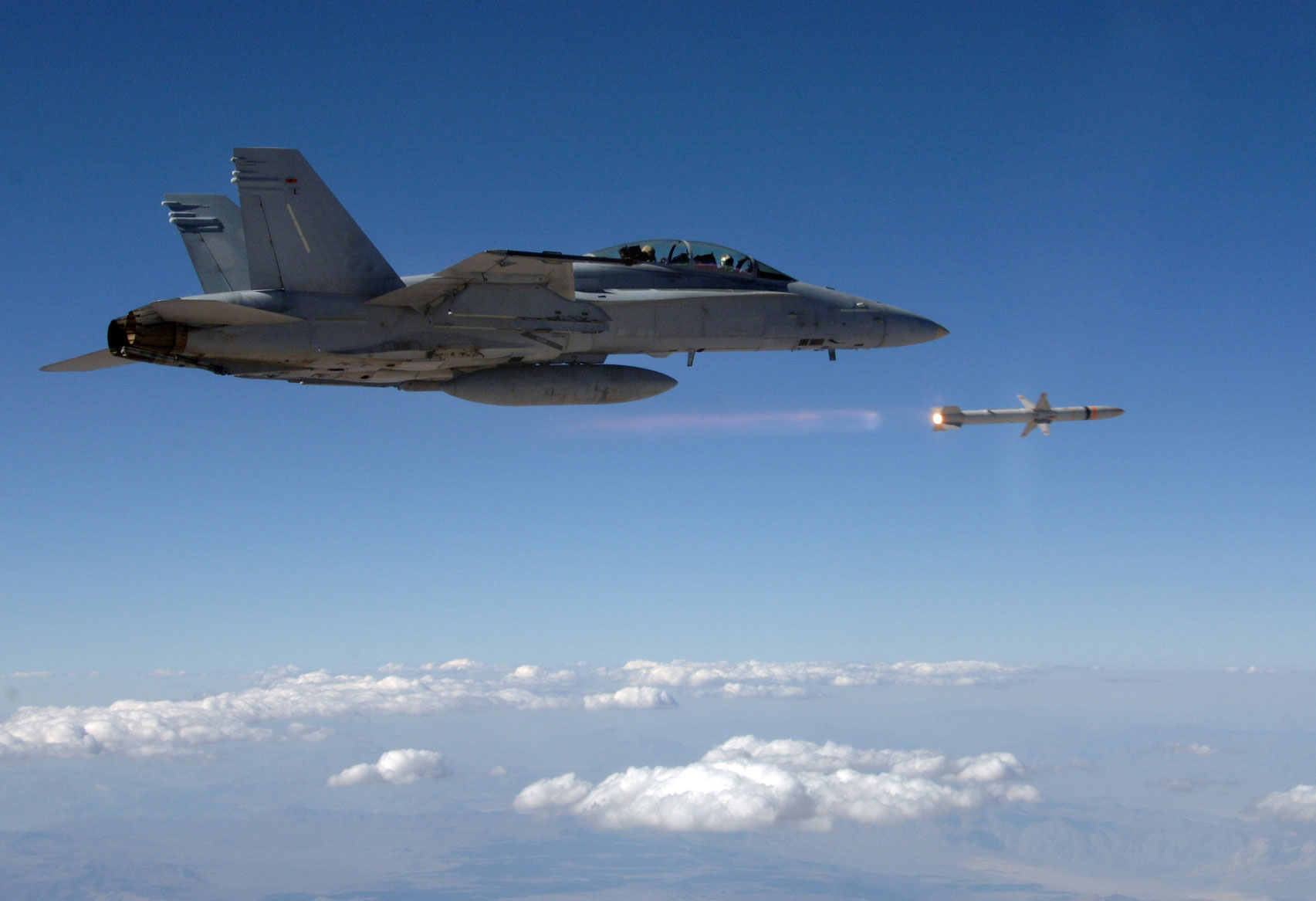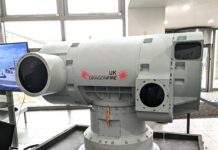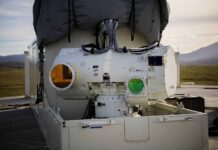An Anti-Radiation Missile (ARM) is a missile designed to detect and home in on an enemy radio emission source. Typically, these are designed for use against an enemy radar, although jammers and even radios used for communications can also be targeted in this manner.
When grey-haired missile engineers meet for drinks in the UK town of Stevenage, the home base of MBDA UK, one of the stories that they reminisce over is likely to be what a fictional detective such as Sherlock Holmes or Philip Marlow might have described as “The Tale of the Terrified Typist”. Like all legends, it has probably been embellished with each retelling, but the original version – as told to this writer soon after the event that gave rise to it – was as follows:
Early in 1991, the company (which was then BAe Dynamics) had an important package that had to delivered to the UK Royal Air Force (RAF) transport base at Brize Norton, from which a waiting aircraft would rush it to the Gulf, where the war to liberate Kuwait was about to begin. The package in question was so highly-classified that it had to be hand-delivered, a task that was entrusted to one of the company’s secretaries.
Lady and package were bundled into a waiting police car, which transported them at high speed to the county boundary, where another police car from the next county’s police force was waiting to take over the task. This process was repeated from county to county until lady and package arrived at the waiting aircraft after a journey of around 160 km that had taken only 70 minutes. The police drivers probably enjoyed their chance to drive ‘flat out’, and the secretary’s nervous system is reported to have made a full recovery.
Once safely at its destination, the mysterious package – described to the writer simply as ‘hardware’ – was a key element in preparing the RAF to take BAE’s then-new ALARM (Air-launched Anti-Radar Missile) to war. We can speculate that it might have been needed to programme the missile’s seeker with freshly-prepared threat-emitter details that matched Iraq’s heterogeneous mixture of old and new air-defence hardware purchased from east and west.
In practice, the most widely used ARM during the 1991 Gulf War against Iraq was the AGM-88 High Speed Anti-Radiation Missile (HARM). Developed by Texas Instruments as a replacement for the earlier AGM-45 SHRIKE and AGM-78 Standard ARM, the AGM-88 Started life as a USN programme, so was carried by the A-6E, A-7, F/A-18A/B, and EA-6B. The USAF adopted HARM, initially fielding it on F-4G WILD WEASEL aircraft, then later on specialised F-16s that had been equipped with the HARM TARGETING SYSTEM (HTS), a pod-mounted system used to detect and target hostile radar systems instead of relying on the missile’s built-in capability.
HARM weighs 361 kg and carries a 66 kg warhead. It has a maximum speed of Mach 2.9, and a maximum range of 80 km when launched from medium altitude or 25 km from low altitude. Production missiles are manufactured by Raytheon, which had purchased the defence business of Texas Instruments. Initial operating capability was achieved in 1983, and the first combat launches were made against Libyan targets in 1986.
The AARGM Missile
In 2005, the US DoD and the Italian Ministry of Defence signed a Memorandum of Agreement on the joint development of the AGM-88E ADVANCED ANTIRADIATION GUIDED MISSILE (AARGM). This would fit the missile with a new seeker with a wider field-of-view and increased frequency range, an additional active W-band millimetre-wave seeker able to cope with non-emitting targets, including those that had shut down, a GPS subsystem that would allow engagement and avoidance zones to be specified, and an Integrated Broadcast Service Receiver (IBS-R) unit able to transmit real-time images of the target.
Initial Operational Test and Evaluation (IOT&E) of the AARGM took place in the spring of 2012, and was followed by the authorisation of Full-Rate Production (FRP) later that year, a task handled by Orbital ATK. AARGM entered service with the US Navy and Marine Corps, and was adopted by Italy and Germany, but Raytheon developed a second improved variant known as the AGM-88F HCSM (HARM CONTROL SECTION MODIFICATION) which was adopted by the USAF.
The latest HARM variant is Orbital ATK’s AGM-88G AARGM-ER. This teams the guidance system and warhead of the AGM-88E with a new airframe that lacks the mid-body cruciform wings used by earlier versions, but has a more powerful propulsion system of increased diameter that provides greater speed and range. AARGM-ER started life in 1998 as a USN programme, but soon attracted USAF interest.
Like most ARMs, HARM only poses a direct threat to hostile radars when it is in flight. In order to allow the ingress of a strike force, a series of launches must be made in order to keep threat radars silent. This tactic results in a high expenditure of missiles. During the 1991 Gulf War, the US fired more than 2,000 HARM rounds, and would fire a further 480 during the 2003 Gulf War.
The ALARM Missile
When developing its ALARM missile, the UK opted for a relatively small weapon weighing only 268 kg that could be carried to supplement rather than partially replace an aircraft’s ordnance load. In addition to allowing a traditional direct-fire mode, the BAe (now MBDA) design team also provided a novel loiter mode in which the missile would climb to an altitude of around 40,00ft, then deploy a tail-mounted parachute. If it detected a newly-activated threat radar, the missile would release the parachute, then fly a diving attack.
Many sources claim that the missile reignites its rocket motor and executes a powered dive. Although widely reported, this is not correct, MBDA tells ES&D. “ALARM had a single motor that had separate solid propellant boost and sustain charges, both ignited at the same time and both discharging combustion products through the same chamber and nozzle. The sustain thrust was [used] to maintain speed for the climb to operating altitude.”
ALARM was used operationally by the UK in the 1991 and 2003 Gulf Wars, and in the NATO campaign against the former Yugoslavia. During the latter campaign, it is reported to have to destroyed an important Serbian air-defence radar with a single shot – a target that had survived close to 100 HARM attacks.
Although the original ALARM seeker may have been compromised when an apparently near-intact missile was recovered by the Yugoslavian authorities in 1999, an improved seeker was subsequently fielded as part of a mid-life update intended to address the increasing sophistication of threat radars and anti-ARM countermeasures.
ALARM was withdrawn from Royal Air Force service at the end of 2013, leaving the UK without an operational ARM. Although some unofficial reports have suggested that the hardware is still in storage, the weapon has never been integrated on the EUROFIGHTER TYPHOON. The missile is still operational with the Royal Saudi Air Force, which has used it against Houthi targets during the current conflict in Yemen.
When the METEOR BVR missile was still in development, MBDA studied a possible ARM version that would have combined the high speed of the air-to-air weapon with a combination of passive anti-radar homing and a millimetric-wave seeker. However, the company decided to focus its efforts on the air-to-air configuration, and seems to have shelved the idea of an ARM variant.
In 2012, India’s DRDO began development of the RUDRAM-1 ARM, and the first flight test took place on 9 October 2020. Conducted off the Odisha coast, this test used a Sukhoi Su-30 as the launch aircraft, but the missile was designed to be compatible with the MIRAGE-2000, LCA TEJAS, LCA Mk 2, and JAGUAR. RUDRAM-1 is reported to be 5.5 m long, 140 kg in weight, and to have a range of 100-250 km.
Taiwan’s TC-2A is an ARM variant of the Chung Shan Institute of Science and Technology’s T’IEN CHIEN-2A BVRAAM missile. Flight tests started in the mid-1990s, and the weapon arms the locally-developed CHING KUO fighter. Maximum range is reported to be 100 km.
Brazil began development of an ARM in 1997. Highly classified at first, the programme was handled by Brazil’s DCTA (Aerospace Technology and Science Department) and Mectron (now SIATT). Brazil’s Institute for Advanced Studies developed the missile’s fibre optic gyroscope (FOG) module, while Opto Eletronica tackled the proximity fuse. Attempts to procure hardware needed to create the passive seeker were blocked by the USA in 1999, so DCTA embarked on the development of an all-indigenous seeker.
In 2008, the Brazilian Air Force publicly displayed the resulting MAR-1 during an open day, and the Brazilian government approved the sale of 100 MAR-1 missiles to Pakistan. By 2013, Mectron was reported to have delivered training rounds, equipment for mission planning, logistics and support, and to have integrated the MAR-1 with Pakistani MIRAGE III/V fighters. SIAT no longer lists the MAR-1 as an active programme, so deliveries to the Brazilian and Pakistani air forces have presumably been completed.
Russian Weapons
Russia offers three basic types of ARM for export, each available in several variants. The Kh-25MP and Kh-25MPU are the current versions of the Kh-27 (AS-12 KEGLER). Weighing 310 kg and 320 kg respectively at launch, they have a maximum range of 40 km, and carry a 90.6 kg blast/fragmentation warhead. Two patterns of seeker can be used, depending on the target to be engaged.
The -25MP and -25MPU were followed into service by the Kh-58 series (AS-11’KILTER’) third-generation ARMs. The Kh-58E is the basic export model, a 650 kg weapon with a range of 120 km for a high-altitude launch or 36 km at low altitude. It can be fitted with any one of five alternative seekers according to the type of radar to be targeted. Fielded in the early 1990s, the Kh-58U introduced modified tail fins and an improved rocket motor that doubled its range. The Kh-58UShKE incorporates folding aerodynamic surfaces that make it compatible with internal carriage in an aircraft weapons bay fitted with UVKU-50 type launchers. It guidance system teams a passive broadband seeker and a strapdown inertial navigation system. The Russians classify the seeker as operating in the “combined A/A’/B/B’/C frequency band”. These band designations do not match those used in the West, so seem to be a scheme used only in Russia. However, another statement by Rosoboronexport gives the seeker’s operating range as being against pulse emission mode emitters in the 1.2-11 GHz frequency range.
The Kh-31P is a 600 kg-class ramjet-powered weapon with a missile cruising speed of 1,000 m/sec, a maximum range of 110 km and an 87 kg warhead. It uses three optional seeker heads designated L-111, L-112, and L-113. According to Rosoboronexport, these operate in the frequency bands used by the continuous-wave and pulsed radars of surface-to-air missile and anti-aircraft artillery systems. Development of the Kh-31PK was completed in the late 1990s, but the project remained classified until 2006. This version retains the existing powerplant and control system, but used a improved version of the seekers, a proximity fuse is designed to be effective against antennas mounted 4-15 m above the ground, and a warhead of increased lethality. An improved seeker-cooling subsystem allows the missile to be carried on missions lasting up to four hours or more.
Production of the Kh-31PD started in 2012. It weighs 715 kg, has a range of up to 250 km and carries a 110 kg warhead. Its guidance system consists of what Rosoboronexport describes as a “wide waveband range passive radio homing head” plus an inertial system. Prior to launch it can be locked onto targets up to 15 degrees from the aircraft’s heading, and after launch can turn up to 30 degrees from its initial flight path.
Chinese Developments
China’s Hongdu Aviation Industry Corporation manufactures the Russian Kh-31P under the local designation YJ-91. The CATIC LD-10 is a more recent Chinese ARM programmeme, and is based on the PL-12 medium-range air-to-air missile. The active-radar seeker of the latter has been replaced by a passive-homing unit. Pakistan ordered the missile in 2011, and received an initial batch in 2016. The CM-102 supersonic ARM was shown for the first time at Airshow China 2014. Developed by CASIC and based on the PL-16A long-range air-to-air missile, it has maximum range of 100 km and carries an 80 kg warhead. The seeker covers the full range of frequencies from 2-18GHz. The CM-103 is even larger, and is reported to be able to deliver a 388 kg warhead over ranges of up to 100 km.
Having reached the final paragraphs of this article, the reader may still be trying to understand the relevance of its title. They may already be aware of the NATO radio calls “FOX TWO” and “FOX THREE” used to announce the launch of infrared-guided and AMRAAM-class missile. The equivalent for a HARM launch is “MAGNUM”, a word which if heard in a radio transmission can sometimes be enough to cause enemy radars to cease emitting. In today’s anti-radar game, the threat of an ARM launch can prove as combat-effective as having a missile en route.












